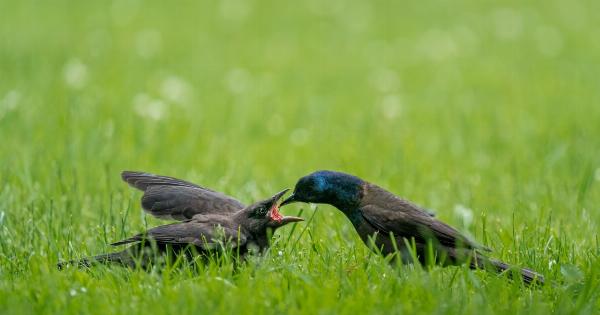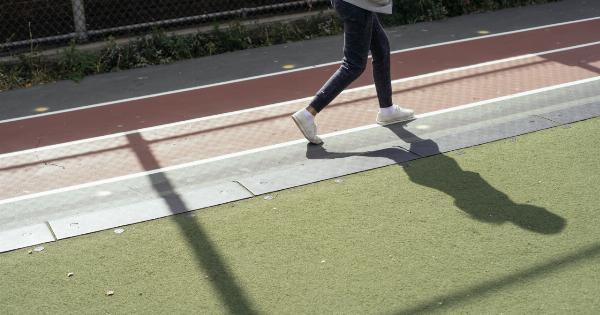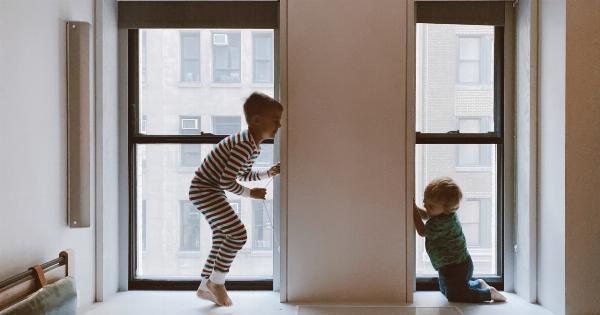Head injuries in children can be a serious and concerning issue. According to recent studies, head injuries are one of the leading causes of death and disability in children.
It is important for parents and caregivers to be aware of the common causes of head injuries in order to prevent and minimize the risk of these accidents from occurring. In this article, we will explore the most common causes of head injuries in children and provide tips on how to prevent them.
1. Falls
Falls are the leading cause of head injuries in children, particularly in younger age groups. Children naturally have a high level of activity and curiosity, which can lead to falls.
Activities such as climbing, running, jumping, and playing on playground equipment without proper supervision can result in falls that may cause head injuries.
To prevent head injuries caused by falls, it is important to create a safe environment for children to play. This includes using safety gates or barriers to block access to stairs, securing windows, and installing safety rails on beds.
Providing adequate supervision during playtime is also crucial, especially when children are engaging in activities that involve heights or potential fall hazards.
2. Sports and recreational activities
Participating in sports and recreational activities is very beneficial for a child’s physical and mental development.
However, these activities also pose a risk of head injuries, especially contact sports such as football, hockey, and martial arts. Activities like biking, skateboarding, and rollerblading also carry a risk of head injuries if proper safety gear, such as helmets, is not worn.
Parents and caregivers should ensure that children wear appropriate protective gear, including helmets, during sports and recreational activities. Helmets should fit properly and be worn consistently, even during practice sessions.
It is essential to teach children about the importance of wearing protective gear and to lead by example by wearing helmets during activities where head injuries are a possibility.
3. Motor vehicle accidents
Motor vehicle accidents are a significant cause of head injuries in children. Unfortunately, many of these accidents are unavoidable, especially those involving other drivers.
However, there are measures that can be taken to minimize the risk of head injuries in such situations.
Children should always be secured in appropriate car seats or seat belts, depending on their age and size. It is essential to follow local laws and guidelines regarding child passenger safety.
Additionally, the use of age-appropriate car seats and restraints should be enforced for all children, even for short trips. Remember never to leave a child unattended in a vehicle, as heat exposure can also result in head injuries and other health complications.
4. Bicycle accidents
Bicycling accidents are a common cause of head injuries in children. When riding bikes, children should always wear properly fitted helmets to protect their heads in case of a fall or collision.
It is also crucial to teach children about road safety, including traffic rules and the importance of staying visible to drivers.
Supervision is key when it comes to preventing bicycle accidents. Adults should accompany children while they are cycling until they are old enough and responsible enough to ride independently.
It is also essential to choose appropriate bike paths or safe areas away from heavy traffic for children to ride their bikes.
5. Playground accidents
Playground accidents, especially in public parks or school playgrounds, are a significant cause of head injuries in children.
Falls from swings, slides, monkey bars, or other play equipment can result in head injuries if children are not careful or if the equipment is faulty or poorly maintained.
Parents and caregivers should always inspect playground equipment before allowing children to use it. Look for signs of wear and tear, loose bolts, or sharp edges.
Teach children how to use the equipment safely and monitor their play to ensure they are playing in a safe and responsible manner.
6. Abuse and violence
Child abuse and violence can sadly result in head injuries. It is crucial to recognize and report any signs of abuse, as it can have devastating consequences for the child’s health and development.
If you suspect a child is being abused or witnessing violence, it is your duty to report it to the appropriate authorities.
7. Accidental hits and collisions
Accidental hits and collisions with objects or other individuals, such as during rough play or participating in contact sports, can also lead to head injuries.
It is important to teach children the importance of playing safely and responsibly, avoiding rough play that may result in accidental hits or collisions.
Supervise children during playtime and ensure that they have adequate space to play without obstacles or hazards that could lead to accidental hits or collisions.
Encourage children to communicate and resolve conflicts peacefully, without resorting to physical aggression.
8. Swimming and water-related accidents
While swimming and water-related activities can be enjoyable and offer numerous benefits for children, they carry the risk of head injuries, particularly if proper safety precautions are not followed.
Diving into shallow water, horseplay, or unsupervised water activities can all result in head injuries.
Adult supervision is crucial when children are swimming, even if they are competent swimmers. Teach children about the dangers of diving into shallow water and the importance of obeying pool rules.
Ensure that swimming pools or bodies of water are properly secured and inaccessible to children when unsupervised.
9. Household accidents
Accidents that occur within the home environment can also lead to head injuries. These accidents can include slipping and falling on wet floors, hitting their heads against furniture or walls, or accidental ingestion of harmful substances.
To prevent head injuries at home, it is important to create a safe environment. This includes keeping floors dry and free of hazards, securing furniture to the walls to prevent tip-overs, and keeping harmful substances out of reach of children.
It is also essential to teach children about household safety and potential dangers.
10. Riding toys and recreational vehicles
Riding toys and recreational vehicles such as scooters, skates, skateboards, and ATVs (all-terrain vehicles) can also result in head injuries if not used safely.
Children should always wear appropriate safety gear such as helmets, knee pads, and elbow pads when using these types of toys.
Supervision is vital when children are using riding toys, especially for younger children who may not have adequate control or judgment.
Teach children proper safety techniques, such as maintaining balance, using hand signals, and avoiding high-traffic areas.
Conclusion
Head injuries in children are a serious concern, and many of them are preventable.
By being aware of the common causes of head injuries and taking appropriate safety measures, parents and caregivers can significantly reduce the risk of these accidents occurring. Remember to create a safe environment, supervise children during playtime, teach them about safety measures, and always ensure the use of appropriate protective gear. By doing so, we can help keep our children safe and protected from head injuries.



























